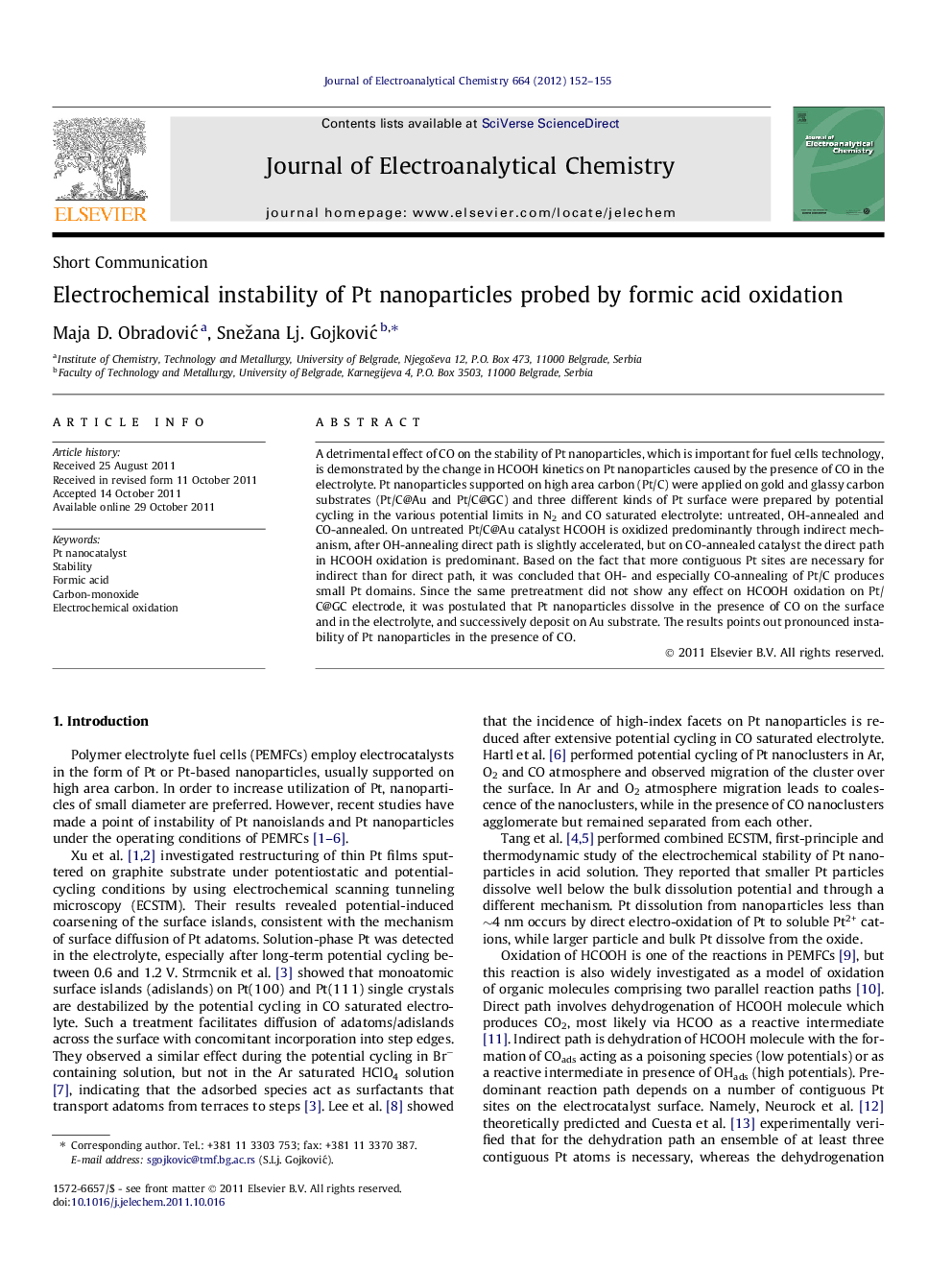| Article ID | Journal | Published Year | Pages | File Type |
|---|---|---|---|---|
| 219473 | Journal of Electroanalytical Chemistry | 2012 | 4 Pages |
A detrimental effect of CO on the stability of Pt nanoparticles, which is important for fuel cells technology, is demonstrated by the change in HCOOH kinetics on Pt nanoparticles caused by the presence of CO in the electrolyte. Pt nanoparticles supported on high area carbon (Pt/C) were applied on gold and glassy carbon substrates (Pt/C@Au and Pt/C@GC) and three different kinds of Pt surface were prepared by potential cycling in the various potential limits in N2 and CO saturated electrolyte: untreated, OH-annealed and CO-annealed. On untreated Pt/C@Au catalyst HCOOH is oxidized predominantly through indirect mechanism, after OH-annealing direct path is slightly accelerated, but on CO-annealed catalyst the direct path in HCOOH oxidation is predominant. Based on the fact that more contiguous Pt sites are necessary for indirect than for direct path, it was concluded that OH- and especially CO-annealing of Pt/C produces small Pt domains. Since the same pretreatment did not show any effect on HCOOH oxidation on Pt/C@GC electrode, it was postulated that Pt nanoparticles dissolve in the presence of CO on the surface and in the electrolyte, and successively deposit on Au substrate. The results points out pronounced instability of Pt nanoparticles in the presence of CO.
Graphical abstractFigure optionsDownload full-size imageDownload as PowerPoint slideHighlights► HCOOH oxidation was studied on Pt/C applied on Au and glassy carbon substrates. ► Pt nanoparticles dissolve during potential cycling in CO saturated electrolyte. ► Subsequent deposition of Pt on Au substrate occured. ► Small Pt domains on Au caused tremendeous increase in HCOOH oxidation rate. ► 10 min of cycling produced enough dissolved Pt to be detected by HCOOH oxidation.
